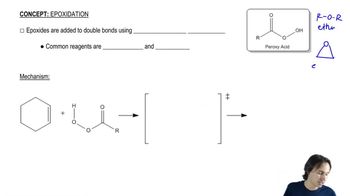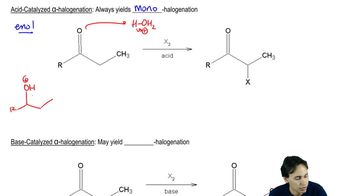Predict the major products of the following reactions, including stereochemistry.
f. trans-pent-2-ene + peroxyacetic acid in water
 Verified step by step guidance
Verified step by step guidance Verified video answer for a similar problem:
Verified video answer for a similar problem:



 4:34m
4:34mMaster Acid-Catalyzed Epoxide Ring-Opening with a bite sized video explanation from Johnny
Start learning